Introduction: Flowers are an excellent way to enjoy your backyard, but they also increase the appeal of your home, mainly if it is adequately landscaped, to your neighbors and friends. The colors of its flowers and the green grass and leaves of trees and bushes further enhance its natural beauty. An attractive flower garden can also be complemented by backyard accessories such as fire pits and ponds. It is easy to create a beautiful flower garden in your backyard. It only takes a creative mind and a green thumb to turn a simple garden into something spectacular.
Step by step to create your backyard flower garden, the best way to start a flower garden for the backyard, and top 15 flowers to grow in the backyard.
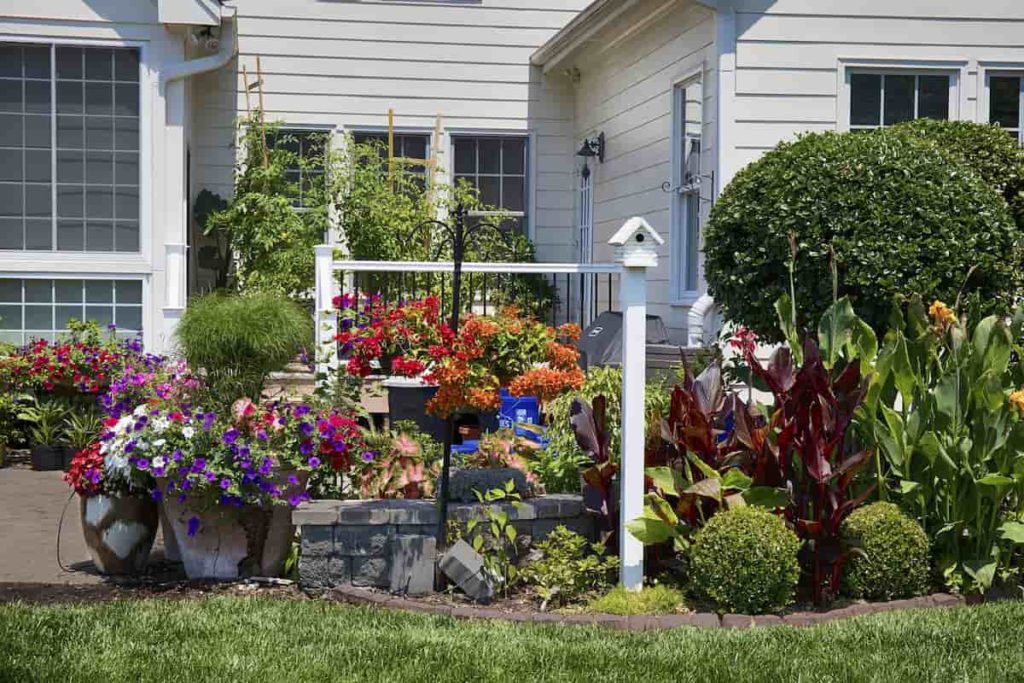
1. Get to know your garden
Knowing your site is essential: Creating the perfect flower garden begins with familiarizing yourself with the planting area. But, first, get to know your site well. Get to know the characteristics of your land by listening to Mother Nature. Observe light and moisture conditions as well as the topography.”
Knowing your soil is essential: Performing a soil test is one of the essential steps to ensuring a successful flower garden. You can collect soil samples by digging a hole a foot deep, collecting a few tablespoons from each area, and then repeating this process throughout your garden. Soil and Plant Nutrient Testing Laboratory (soiltest.umass.edu) can test your soil and use the results to amend your soil before planting.”
Get to know your flowers: Learn what plants grow well in your soil. Once you have an idea of what you want, you can decide how to design it.” For example, Carol Bornstein, the horticulturist at the Santa Barbara Botanic Garden, suggested visiting nearby natural areas to discover the flowers they like.
Knowing your frost cycle is essential: The last and first frost dates in your area will help you ensure your newly planted garden will survive the seasons. To determine when you start seeds and allow you to plant varieties that will grow through autumn. You can give your plants a head start by starting your seeds 4 to 6 weeks before the average last frost date. It will help their growth and cut down on weeds. Cover your seed trays indoors under grow lights if you don’t have a greenhouse to start your seeds in.
2. Choose your color palette
Cultivate unity: A color scheme that helps unify a landscape. By using variations and different shades of the same color, an impact is made without dominating.
Creating excitement: Colors opposite on the color wheel can create juxtaposition while sticking to similar hues creates harmony. It is refreshing, lively, and summery to combine blue and yellow, for instance. A sunny place takes advantage of light best with warm tones such as yellow, orange, and red, especially during the ‘golden hours’ when the sun rises or sets. But hot colors can look rather bland on their own. The addition of blue to yellow creates harmony and vibrancy.
Create a peaceful environment: Having too much variety can become monotonous, so practice restraint. It’s not necessary to have everything called your name in the garden. Instead, use intense color in one area and neutrals in another.
3. Be a pro at design
Design with shape: The shape is an excellent starting point when designing a flower garden. Plants have several basic shapes: spires, plumes, daisies, buttons, globes, umbels, and screens. See if you can spark off different shapes when you put them together. Some combinations will be colorful and dynamic, and others may clash. Pairing flowers of the same shape together can reinforce a concept.
Repetition in design: Repetition of basic shapes or colors provides a sense of calm and unity. Plants that return yearly should be hardy, not look untidy after flowering, and thrive in the garden. Moreover, the strategic repetition of flowers creates continuity throughout the garden.
Design in layers: When designing a border, it is essential to keep sightlines open to see flowers at the rear.
Designing in combinations: Don’t think about individual species but rather plant combinations. Mixing plant heights, sizes, colors, textures, and scales will keep the garden interesting at all times. Relaxed plantings will provide color, movement, and a meadowlike setting.
Design that incorporates fragrance and movement: The garden design does not incorporate these elements often enough.” natural breeze patterns to allow the scents of flowers to waft toward your home and patio areas.
The best way to start a flower garden for the backyard
Prepare the site by planning and preparing: As small as a window box or a container on the patio can be your flower garden. Raised garden beds or brand-new flower beds could be an option. Make sure you know the location’s exposure to sunlight. Observe how the light and shade change throughout the day at your chosen spot. There are more blooms when there is more sun. For drought-resistant perennials like coreopsis and coneflower, a south-facing flower bed gets six hours of sunlight. Filtered light may also be beneficial. Alternatively, you can choose a shade-tolerant hosta or heuchera from a different group. It is possible to have narrow or wide borders, ranging from two feet to eight feet. Plants are layered in clumps for a more cottage garden look with a broader flower border. You need room to maneuver when pruning, deadheading, or dividing perennials.
In case if you miss this: How To Start Backyard Vegetable Garden in the USA
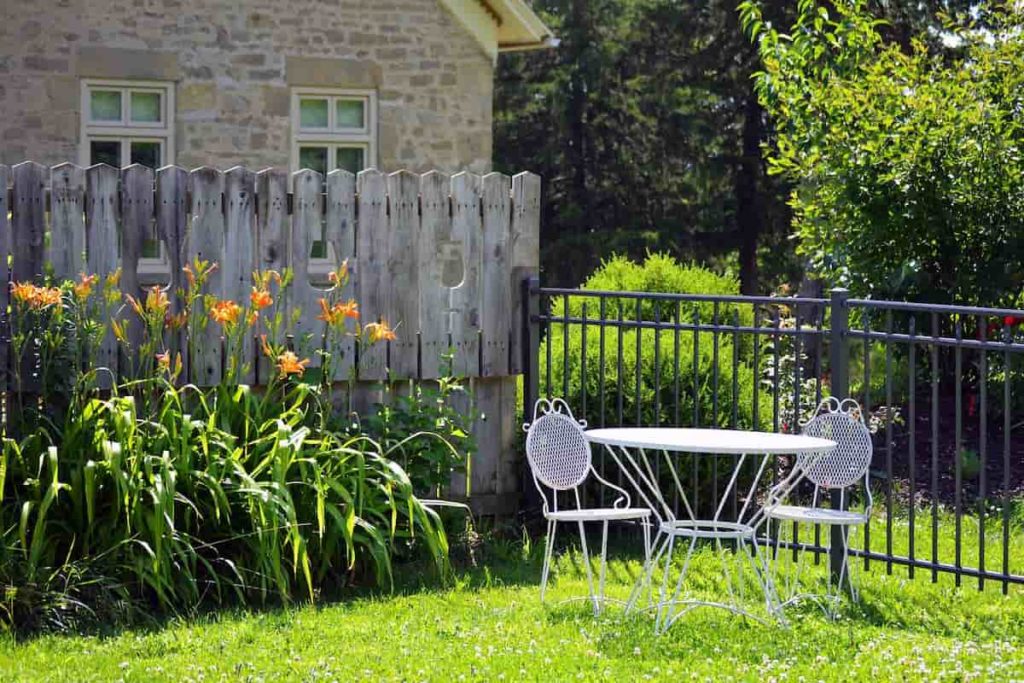
After you have determined the location: Amend and improve the soil before planting the plants. If you are growing in a window box or container, choose a well-draining potting mix and moisture-retentive. If growing in a raised garden bed, use a unique mixture of organic materials and nutrients. You can buy raised garden soil, or you can mix your own from garden soil, peat, and compost. Removing weeds and amending the soil in flower borders is essential. Put down a layer of landscape fabric to keep weeds out, and top with six inches or more of garden soil or topsoil. Adding composted manure to a bed before planting will improve its fertility. Drainage must be adequate in the ideal location. Water-loving plants do well in swampy conditions, but most perennials like dry ground. Keep in mind also how you plan to water your garden. If you need to water by hand, do you have a watering can nearby or a garden hose nearby? Having an irrigation system will make gardening more accessible, allowing you to choose plants more efficiently.
Select the plants: Make your garden a priority by planning it according to height, color, and spacing. Tall plants and shrubs should be placed in the back and smaller plants in the front. Plant ornamental grasses such as Muhly grass and purple fountain grass to add height and structure. Plant shrubs such as distylium, nandina, loropetalum, and ligustrum to anchor your flower bed and add winter interest. You can get ideas on planting perennials in your garden by checking out this guide on planting perennials. Remember the thriller, spiller, filler formula when planting containers or window boxes. Fill in with small colorful blooms and a sprawling plant draping over the edge of the taller element at the back. Make sure that the flower beds and containers feature colorful annuals.
Plan with a purpose: To plant, follow the instructions on the plant tags for spacing, consider the mature height, use good garden soil, and be gentle when pulling the plants from their containers. Be sure to water the new plants frequently until they become established. New plants benefit from a mulch top-dressing that helps retain moisture and keep their roots cool. Your gardening skills will grow along with your garden. Limit the color palette at the beginning. An excellent place to start is with three colors. A monochromatic look, for example, can be created with shades of yellow, orange, and red, as well as a serene selection of pinks and pale purples. Bulbs can either be planted in the ground or containers in the fall for spring blooms. You can include edibles in your flower bed if you learn more, such as kale and herbs. Another alternative is to grow flowers from seeds. ZINNIAS are easy to grow and provide a burst of color during the summer heat. Learn more about how to take care of your flower garden. The Home Depot delivers online orders when and where you need them, whether it’s for pots, seeds, or potting soil.
How to plant beautiful flower gardens in your backyard
Performing an inspection: Your garden’s size is determined by inspecting the entire area. A garden’s size can play a significant role in determining what type of renovation is appropriate. If you have a small garden, you should plant small flowers such as lavender and petunias to create the illusion of more space. You can combine pink and purple in one corner to create a stunning arrangement. Different heights of racks also contribute to the look.
Design a path: You can access both your house and your garden through garden paths. It is essential to choose them carefully to make the surrounding space look beautiful. If you are designing an expansive garden, you have to make sure the path is curved. Curving the path makes the whole place seem more intimate. Therefore, people will not feel fatigued just by looking at it. It’s possible to use cement pieces with stones on the sides and at intervals as well.
In case if you miss this: Top 50 Vegetables To Grow In The Backyard
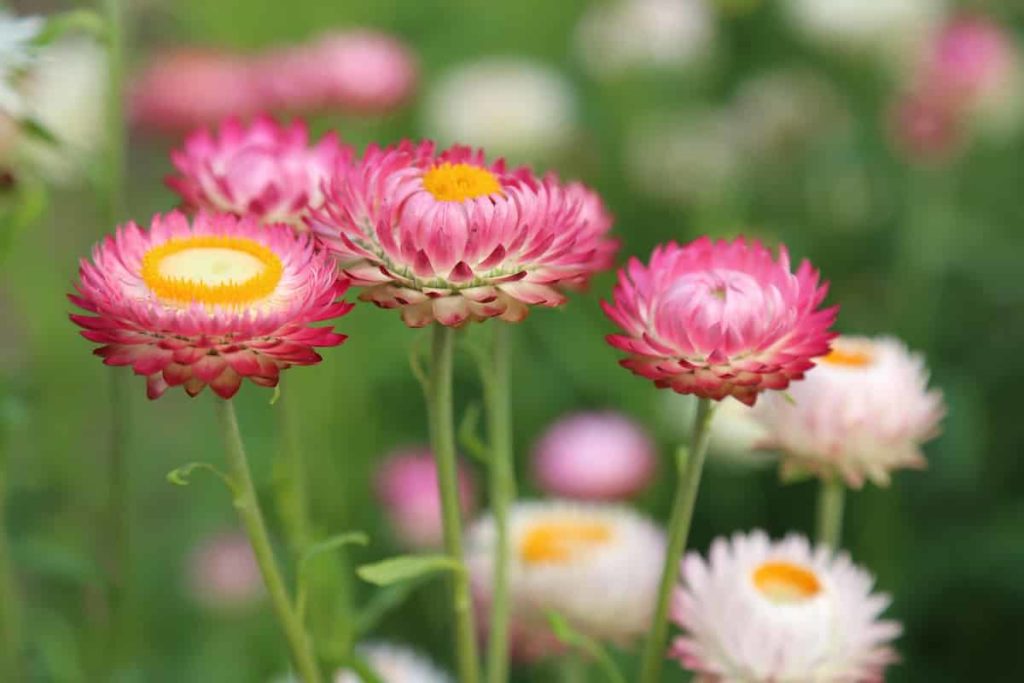
Select your flowers: Gardening in the backyard isn’t complete without flowers. But, to add to a garden’s aesthetic value rather than diminish it, they should be packed correctly.
Keep in mind the season: Flowers thrive in different seasons and environments, so picking flowers that thrive year-round or adding some evergreens is necessary.
Decorate the garden with accessories: Combining a pond with a flower garden is a great idea. As a result, the interior of the home is enhanced by a natural aesthetic effect. However, small gardens are not suited for ponds and waterfalls, making small gardens seem even smaller. Another option is to add a small fire pit in one corner, surrounded by short and colorful flowers.
Performing maintenance: When it comes to maintaining the beauty of a flower garden you have created, it is vital to maintain it for as long as possible. These tasks are sweeping dried leaves, cutting withered leaves and flowers, watering plants, and weeding grass. To increase the beauty of your backyard, take these steps to ensure healthy flower growth.
Top 15 flowers to grow in the backyard
Marigolds: Many consider this flower an easy plant to grow in the garden, as it thrives when provided with adequate sunlight. Moreover, they’re versatile enough to thrive in moist or dry soil, even without supplemental fertilization.
Sunflowers: It is available in more than 70 different varieties and tends to attract bees. As long as they have full sun, they tend to grow beautifully irrespective of soil conditions. Heritable varieties are more likely to exhibit heliotropism, the phenomenon of flowers growing in response to sunlight.
Zinnias: It is a great choice to brighten up your garden since it usually grows up to four feet tall. However, be aware that Japanese beetles are attracted to white zinnias, so choose a different variety if they’re prevalent where you live.
Morning Glories: If you provide some shade and full sun, you can enjoy these trumpet-shaped flowers. Although they are tolerant of challenging conditions, they prefer moist soils that drain well. These plants are ideal for a dense ground cover or adding interest to a fence or trellis.
Peonies: Both warm and cool climates will benefit from these stunning, fragrant blooms. Providing full sun and well-draining soil will allow peonies to thrive. Avoid windy locations.
Pansy: It is a colorful bloomer best known for its whiskered faces on many of its flowers. Although some pansy varieties live longer, most varieties are annuals. However, several cultivars perform better in cooler weather, grown as winter annuals in warm climates. An old-fashioned annual, which opens early in the afternoon, have a sweet fragrance that attracts butterflies and moths during the day.
Chrysanthemums: There are many types and colors of mum, ranging from hot pink to pumpkin orange. If you plant these perennials in the fall, they will likely not return next year since they are putting their energy into blooming, not putting down roots. So instead, plant them in the spring so their roots can establish and survive winter.
Hydrangea: You’re sure to find one you love among the hundreds of types! According to the plant tag, some require shade with a bit of sun to flower, while others do well in full sun. Many dwarf varieties may also be grown in pots.
Lavender: Stunning when planted in large swaths, this perennial has an incredible fragrance. However, it is essential to select a variety that will last through the winters in your region.
In case if you miss this: Backyard Vegetable Gardening In Australia

Impatiens: Impatiens do not require much more than a shady spot and enough water to prevent them from wilting. Make sure they are planted in consistently warm weather. In recent years, many impatiens have succumbed to downy mildew. New hybrid ‘Big Bounce’ (pictured) for partial sun and shade resists this deadly disease. There are also disease-resistant impatiens in the ‘Bounce’ series.
Snapdragons: Butterfly-friendly plants include pink and cream snapdragons (Antirrhinum majus) such as ‘Twinny Appleblossom. These plants bloom heavily and endure harsh weather in spring and fall.
Cosmos: You can grow cosmos plants in your garden or grow seeds of these daisy-like flowers. These annuals will thrive in poor soil regardless of the type of soil. Upon planting, they tolerate drought, prefer full sun, and enjoy afternoon shade in hot climates.
Coneflower: Echinaceas are low-maintenance coneflowers that are planted in the spring. Plants of this compact variety, Sombrero Poco Yellow, love the full sun and tolerate some drought. Red, pink, coral, white, and orange are among the colors in the Sombrero series.
Rose: The plant Rose is widely known to people who are not planting lovers. Plants of this genus have over 300 varieties and can be shrubs or group plants. A rose is known primarily for its red color, which makes it appealing to many couples. Rose reduces skin redness and soothes irritation. Also, it contains antioxidants that can treat scars, cuts, and burns.
Bougainvillea: Among tropical plants, Bougainvilleas make great climbers. The bougainvillea plant is an evergreen climber used in many gardens as an ornamental plant. A garden with gray colors will benefit from its bright colors. The plant prefers open-air and a hot, dry climate. The thick piercing thorns make it resistant to attacks by cattle and birds as well.
Hibiscus Rosa Sinensis: Hibiscus flowers are vibrantly colored flowers with vibrant petals. Students commonly refer to them as shoe flowers. It has excellent medicinal properties, but it is more commonly used as a dissecting flower in schools. There are many varieties of Hibiscus, each with brightly colored petals and a multitude of uses.
Ixora: Any garden can grow Ixora during the summer. Ixora flowers reasonably freely in the summer months, sometimes even in the winter, with over 500 species to its name. One of its varieties is Ixora Coccinea, which blooms in winter. Red, yellow, and orange are the primary colors of the plant. Many gardeners also favor them because of their easy growth and maintenance.
Lantana: Latinas are vibrant, broad-leaved plants categorized as shrubs, despite their appearance of a vine. There are many different colors available, including yellow, orange, white, red, and purple. They are mixed to create a bicolored effect that enhances the beauty of the entire garden. Despite their appearance, these plants do not smell as good as they look but have excellent foliage. They prefer warm climates, well-drained soils, and significantly less fertilizer.
In case if you miss this: Growing Mango Tree In Backyard – A Beginners Guide
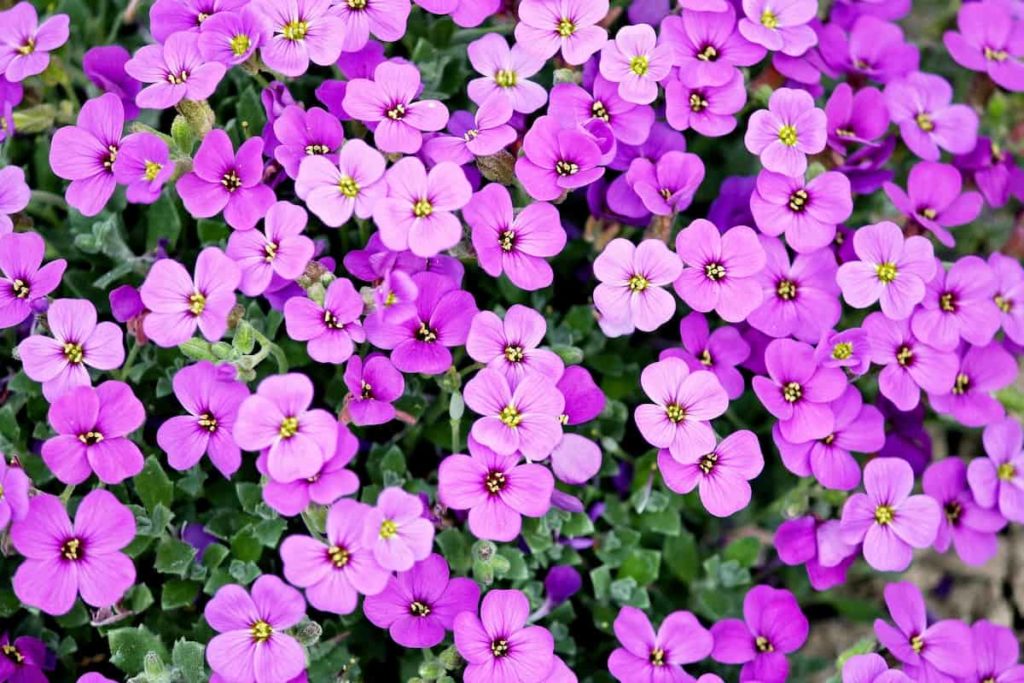
Adenium: Adenium is more commonly known as the desert rose by botanists and gardeners. These plants are typically used as Bonsai plants and have a variety of bright colors and shades of red, which few flowers can match. Note that these plants are susceptible to worm infestations, so applying a fungicide after cutting the stems would be a good practice.
Militia: The Christ plant or the Christ thorn is commonly known as the militia around the world. It is a native of Madagascar. However, the plant has also been found to be suitable in India by many botanists. The result is that milii can be grown throughout the country in many regions with a warm climate and good, moist soil. Plants like this have tiny flowers that give the gardener a unique experience. In addition, militia plants require low maintenance, so caring for them is not a complex affair.
Kalanchoe: Flowers of the Kalanchoe plant come in a bunch and are yellow, red, pink, orange, and white. It gives the garden many small bouquets of vividly colored plants. The plant reaches a height of 12 inches and requires little maintenance. All you need is well-draining potting soil and lots of light.
Crossandra: There are many areas in India where Crossandra is cultivated. It is also called Aboli. Crossandra is cultivated primarily for commercial purposes. You can, however, plant it for ornamental purposes to add some luster to your garden. The Firecracker plant is also known as such because of its striking color. Also used as ornamental plants, they are often combined with jasmine to give a fragrant and visually appealing effect.
Tibouchina: These plants, also known as Princess flowers or Begum Bahar in Hindi, grow up to 15 feet high. Purple is the most common color. Almost fluorescent at night, these plants grow up to 3 meters wide.
Mussaenda acuminate: The Rubiaceae family includes this plant. In addition to its attractive appearance, it is available in a variety of colors. Initially found in the tropics of Asia and Africa. It is a popular ornamental plant. There are between 7.5cm to 12.5cm long leaves. The plants in this group are used to treat leprosy and jaundice. Additionally, it is used to treat patients with asthma, ulcers, and edema.
Ixora Coccinea: Its summer flowering cousin, Ixora, is native to South Asia, Bangladesh, and Sri Lanka. It is one of Florida’s most prolific flowering shrubs. Rukmini is its Hindi name. The plant comes in dwarf and tall varieties.
Commonly asked questions about flower backyard gardening
How do you make a flower garden in your backyard?
- How to Make a Flower Garden
- Select a location
- Pick your Flowers
- Grass needs to be removed
- Preparing the soil
- Put flowers in the ground
What is a simple way to start a flower backyard garden?
You need to remove weeds and amend the soil. Put down landscape fabric to block weeds and top with six inches or more of garden soil or topsoil if this is a new bed. Adding compost to a bed before planting will help it grow. A location that has adequate drainage would be ideal.
In case if you miss this: Backyard Gardening For Beginners – How To Start
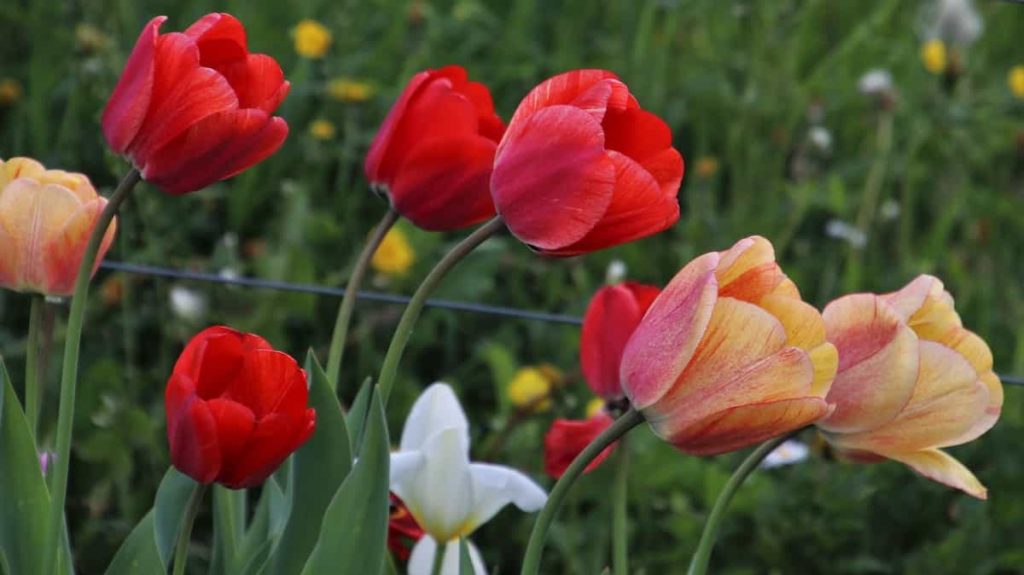
What kind of soil is best for a backyard flower garden?
Soils containing organic materials like peat moss allow for adequate drainage, which is crucial for flower growth. Compost can help compensate for any deficiencies in the native soil. Lighter soils allow roots to grow, spread, and anchor.
Do you know what factors to consider when doing backyard flower gardening?
- Environmental factors
- size of plants
- Shade percentage
- The flowering time
- Maintenance
- resistance to disease and parasites
How much water should I give my backyard flowers?
Watering encourages more profound and more substantial root growth. Therefore, it is advisable to water gardens every week about 2 inches (5 cm.). Watering less frequently but more intensely will result in weaker roots and evaporation.
- How to Grow Hibiscus from Flower
- Plantation Ideas for Home Decoration: A Beginners Guide
- Flower Garden Designs and Layouts for Beginners
- Planting and Spacing Techniques in Papaya: A Beginner’s Guide
- Growing Gold: Essential Techniques for Planting Pineapples
- How to Make Kalanchoe Plant Bushy: Home Remedies and Solutions
- 11 Reasons Why Your Gardenia is Not Blooming: Home Remedies and Solutions
- Eco Elegance: The Guide to Designing a Drought-Tolerant Landscape
- Gardening on a Slope: Strategies for Hillside Landscaping
- Nourish and Flourish: Top Organic Mulches for Thriving House Plants
- Everything You Want to Know about Indian Mogra Flower: Discover Uses and Growing
- Green Thumb Success: Expert Tips for Cultivating Greenhouse Pumpkins All Year Round
- Maximize Growth & Flavor: The Ultimate Guide to Companion Planting in Herb Gardens
- How to Control Rhododendron Problems Naturally: Home Remedies and Organic Ways to Fix Them
- Natural Magic: The Remarkable Benefits of Cinnamon for Plants
- Best Steps to Revive Dying Tulip with Natural and Organic Treatment
- 10 Reasons Why Your Angel Trumpet is Not Blooming: Remedies and Treatment
- How to Fix Periwinkle Leaf and Flower-Related Problems: Natural Remedies and Solutions
- How to Fix Zinnias Leaf and Flower Problems: Discover Natural and Home Remedies
- Organic Steps to Induce Lemon Tree Flowers: A Comprehensive Guide
- Bloom Booster: Crafting the Perfect Homemade Bougainvillea Fertilizer
- Optimizing Growth: A Guide to Applying NPK Fertilizer for Potted Plants
- 10 Best Homemade Fertilizers for Rubber Plant: DIY Recipes and Application Method
- How to Boost Female Pumpkin Flowers: Effective Steps for More Flowers and High Yields
- Transform Your Indoor Garden: Top Benefits of Pink Salt for Houseplants
- 10 Best Homemade Fertilizers for Peacock Plants (Calathea): Easy DIY Guide
- Unlock Blooms: 9 Reasons Why Your Potted Chrysanthemum is Not Blooming
- 8 Reasons Why Your Potted Hibiscus is Not Blooming: Fix it with Simple Solutions
- Unlock Blooms: 9 Key Reasons Your Potted Frangipani Won’t Flower
- 10 Reasons Why Is My Ice Plant Not Blooming: Remedies and Treatment
- 10 Reasons Why My Potted Hydrangea Not Blooming: Treatment and Remedies
- 10 Reasons Why is My Wisteria Not Blooming: Remedies and Treatment
- 10 Reasons Why is My Goldfish Plant Not Blooming: Remedies and Treatment
- Maximize Your Space: Ultimate Guide to Balcony Gardening with Grow Bags
- 10 Reasons Why Your Iris is Not Blooming: Remedies and Treatment
- 10 Reasons Why Your Anthurium Plant is Not Blooming: Treatment and Remedies